This Whole Grain Spelt Levain is one of the breads featured in the May Issue of Saveur Magazine. They did a story on William Alexander and his breads and this is one of the breads. One of my Facebook friends posted about this issue on Facebook, and I couldn’t wait to take a look at the breads. I really like Mr. Alexander’s methods. I learned about him last year when a radio station did a feature on William Alexander’s 52 Loaves.
There are several breads featured in the Saveur article, but this one really piqued my interest because it’s made with spelt. I’ve developed a keen interest in ancient grains because they are grown and harvested differently than modern wheat which makes them much better for you. Not to mention, the history is intriguing. I also wanted to make this bread because it utilizes a whole grain spelt starter. I haven’t worked with a spelt starter yet so this was a good opportunity to experiment. I liked the result.
This Spelt Levain Loaf is made completely with whole grain spelt flour. It doesn’t contain any white bread flour. It takes 10 days to build the spelt levain, but it doesn’t require very much time each day. You just add spelt flour and water and let it rest until the next day. On the 10th day, you create a sourdough culture and let it rest for 8 to 24 hours until you are ready to bake the bread. After you’ve created the starter, you can keep it going for use in breads like you would a regular starter.
I had this spelt starter going and the goat’s milk starter from the Turcoman Sourdough Bread going at the same time last week. I had a lot fun experimenting with these starters (and no counter space).
Spelt Levain Loaf
Makes
: 1 large loaf
Look for the recipe in the May 2012 Issue of Saveur Magazine
Here is a photo tutorial of the process for making the Spelt Starter and the resulting Spelt Levain Loaf. I doubled the formula to make 2 loaves.
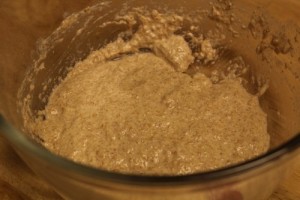 Day 1: Make paste of spelt flour, water and yeast and let sit 24 hours |
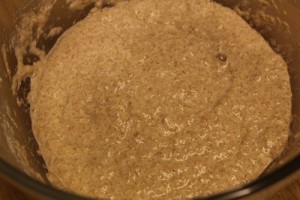 Day 2: Feed starter with additional spelt flour and water and let sit for 24 hours |
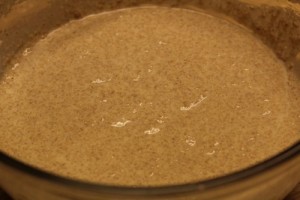 Days 3-9: Feed starter daily and let sit for 24 hours |
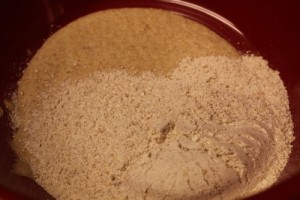 Day 10: Create the sourdough culture and let sit for 8 – 24 hours |
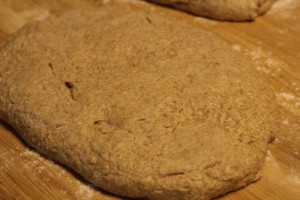 Day 11: Flatten dough slightly |
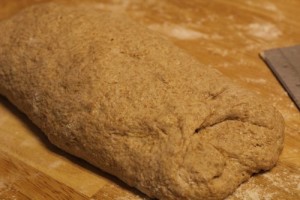 Day 11: Shape into a loaf |
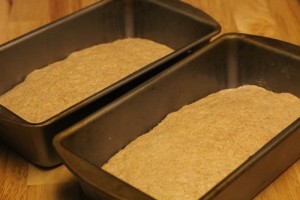 Day 11: Place loaves into loaf pans and let double in size, about 2 – 3 hours. |
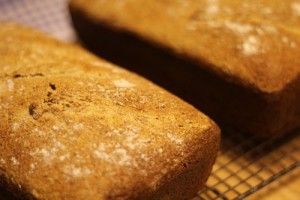 Day 11: Score the loaves, bake in preheated oven and cool on wire rack |
I didn’t follow his process for baking the loaves. He bakes them in the loaf pan on the baking stone with a iron skillet underneath with ice cubes in it. I just baked the loaf in the loaf pan with no baking stone or steam pan underneath. I liked the loaf but I think it would do better as a hearth loaf. Next time I think I’ll shape this loaf freeform and bake it on a baking stone rather than in the loaf pan.
This bread has been YeastSpotted. Please visit Wild Yeast to view all of the lovely breads in the roundup.
This bread has a very deep and rich flavor from the spelt. It is a little dense but very flavorful from the sourdough. It’s sour, but not so much so. It goes really well with cheese. I tried it with peanut butter and jelly, but it was a little bit funky so I’ll stick with cheese and sliced smoked turkey for this bread.
In case you’re interested, the bread I made last Fall from William Alexander’s 52 Loaves was Peasant Bread. It utilizes a sourdough starter made from apples. Making the Apple Starter was lot’s of fun. I use that starter on a regular basis in sourdough breads. Now, I have a spelt starter to use with spelt breads. The apple starter is shown below.
Happy Baking!
Cathy
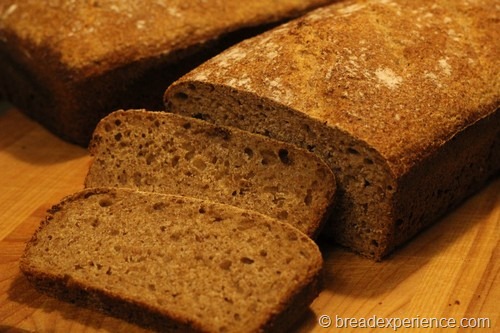
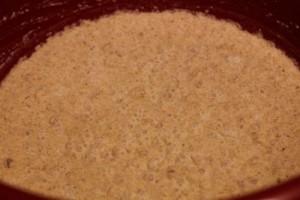
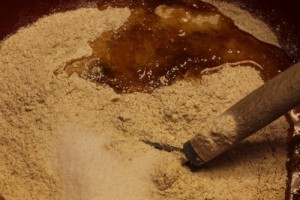
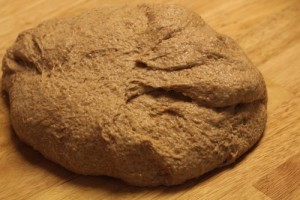
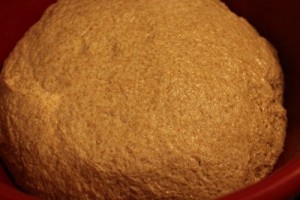
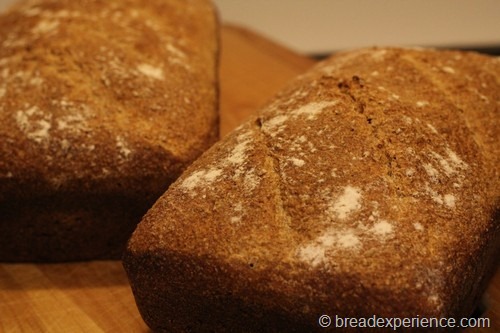

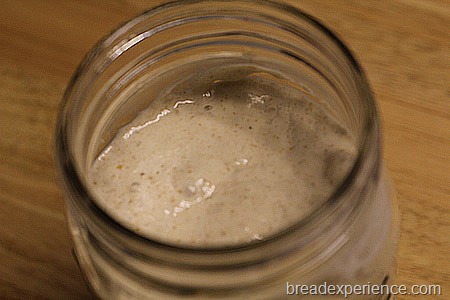
Gena Berwanger says
Hi Cathy, I am excited to see all your adventures in bread-making! I love bread!! I have NEVER made bread. I am cutting my intake of gluten and would like to experiment with ancient grains. I am interested in your spelt starter; it sounds like it would make wonderful bread. I don’t see the proportions for the spelt, water and yeast though, so I feel kind of lost. Am I missing something?
Gena Berwanger
Cathy says
Hi Gina,
Thanks for visiting my site. I do hope you enjoy following along. To locate the amounts for each ingredient for the spelt levain, click on the link at the top of the post to go to the May issue of Saveur magazine. You’ll find the amounts listed in their article on the Spelt Levain Loaf by William Alexander.
Just wanted to mention that spelt does have gluten in it although it is different than the gluten in modern wheat. It has more protein.
Happy Baking!
Cathy